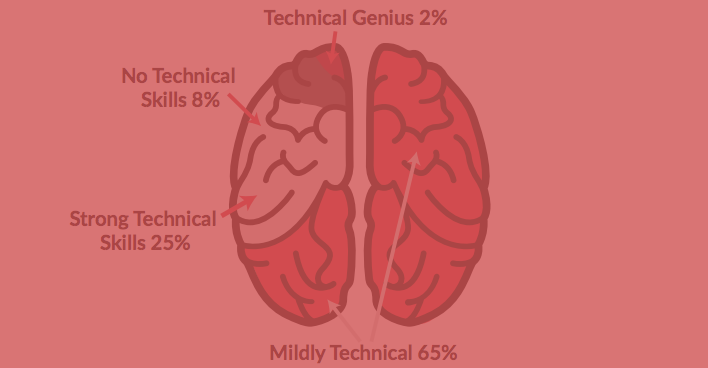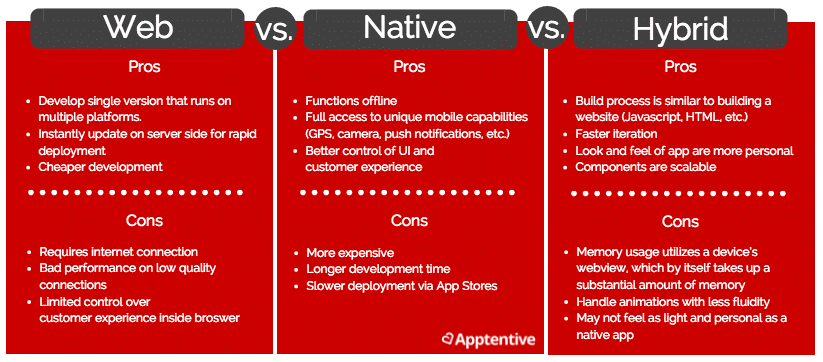Growth Hacking for Mobile Product Managers

Mobile product management is taking the PM world by storm. As more companies make the transition to mobile, PMs everywhere are expanding their knowledge to encompass a new set of tools that can be applied directly to mobile products.
Although mobile is the next big thing in product management, the learning curve can be steep. Where does a PM begin their mobile journey? Through growth hacking their skills, of course!
Here are six steps to growth hack your way into mobile product management:
1. Change your mindset to mobile-first
To take on the world of mobile product management and build world-class app and mobile experiences, the only way to think is mobile-first. More specifically, you could go one step further and start thinking “screen-first” or “platform-first,” depending on your product’s needs.
As mobile continues eating the web, many companies are beginning to take on the “mobile-first” mindset as their standard for designing new products and features. Is your company mobile-first? If yes, you should already be thinking this way (but there’s always room for improvement!). If not, be the change you wish to see across your company.
2. Surround yourself with mobile
To understand what makes a good experience good, and a bad experience bad. By immersing yourself in mobile, you’ll begin to intuitively recognize product experiences that are worth emulating, and will have an easier time brushing up on the basics. For example, do you know the difference between a mobile website, a hybrid app, and a native app? Now is the time to dive in and learn.
For your first quick lesson, here’s a quick explanation around the difference: There are plenty of situations where native is clearly the right choice from the beginning. Native apps are necessary when taking advantage of uniquely mobile capabilities such as a functional offline product and having a strong in-app purchase flow. You may also decide to build a hybrid app before a native app, which will allow much of the same functionality, look, and feel of a
native app, but will reduce the cost and time it takes to build the app (for more on hybrid apps, check out five points to consider before deciding to go hybrid).

3. Become an expert in mobile usability
Customer expectations shift dramatically depending on device. Whether you help your team build for iOS, Android, tablet, wearable, or all of the above, having a deep understanding of how to use specific mobile devices will keep you a step ahead.
People have different expectations depending on what device they use to engage with your product, and knowing how to “design for mobile” in a broad way is no longer enough. The more you know about customer usability expectations, the quicker you can make data-driven product decisions.
4. Build an app from scratch
Sound crazy? You’ve got this! Not only will this exercise help broaden your coding skills, it will also help you understand your development team and process at a deeper level. The more confident you are in your technical skills, the more trust your development team can put in your hands when it comes to assessing scope of work, solving challenges, ordering bug lists, etc. Plus, building an app from scratch can be tons of fun.
Check out these tutorials to help you start:
- Start Developing iOS Apps (Apple)
- Building Your First Android App (Google)
- A Step-By-Step Guide to Building Your First Mobile App (Entrepreneur)
5. Use your device often
The best mobile product managers are always on top of new trends, and the best way to see what’s hot or not is to use your device(s) as often as you can. If you can’t explain what makes your favorite apps great from a technical, marketing, and product perspective, chances are you have some learning to do. The more you challenge what you like and dislike in the mobile experiences you use consistently, the better it will translate to how you build your product.
Additionally, it’s important to experience parity on the platform you are developing for. You can’t be a good mobile PM if your product runs on Android, but you haven’t used Android as your primary personal mobile platform for at least three months in the past couple years, and that goes for iOS as well. In order to build the best product for the platform you choose, you must be as familiar with it as possible.
6. Read
All the time. Every day. As much as you possibly can. Here are a few product and mobile-focused blogs recommended by your peers:
- Product Hunt
- Quora
- PM Subreddits
- Mind the Product
- The Art of Product Management
- Mobile App Management Blog by Apperian
- Apptamin Blog
- TechCrunch
I hope these steps give you a starting point to boost your mobile product management skills.
Author bio: Ashley Sefferman is Head of Content at Apptentive. A mobile marketing and content strategy enthusiast, she writes about mobile apps, loyalty, inbound marketing, and making the mobile world a better place for people.
Thanks for
reading!
More articles you might be interested in:
How Effective Is Your Mobile Product Team?
This is a guest post by Ashley Sefferman of Apptentive Today, there are over 50,000 apps added to the app stores each month, and a whopping two-thirds of all apps see fewer than 1,000 downloads over the course of their...
Read MoreEvent Recap – Fast Data Driven Growth on Native Mobile
Last week, Apptimize held its first event Fast Data Driven Growth on Native Mobile, at Airware’s offices in SOMA. Product managers from Lyft, Dropbox and Yahoo! Growth all shared how their teams have been dealing with the constraints of the...
Read MoreThe Key to Mobile Growth Hacking: Conversion Funnels
When it comes to growth metrics, one of the most important things is finding metrics that are insightful enough that you can figure out exactly what you need to do to grow your user-base. Conversion funnels exemplify actionable metrics by...
Read More